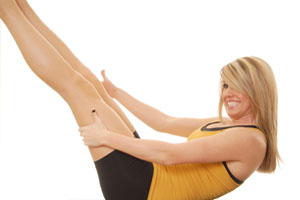Text Neck and More: How Our Electronic Devices Are Changing Our Posture

The last 10 years have seen exceptional innovation in personal electronics. Our smartphones, laptops, and tablets have undoubtedly made it easier to create, consume and share all kinds of content as well as to shop online anywhere and anytime. But they do also have their drawbacks—including negative health consequences. This applies in particular to our posture. The overuse of personal electronic devices is taking a toll on our necks and backs, and this damage could lead to even more serious health issues down the road.
Some medical professionals are calling it the “iPosture Syndrome”. It’s a head-forward posture that many people (teenagers and younger kids included) are developing from hunching over electronic devices for long hours every day. As physiotherapist Carolyn Cassano explains, “If the head shifts in front of the shoulders, as is happening with this posture, the weight of the head increases, and the muscles of the upper back and neck need to work much harder to support it, leading to pain and muscle strain.”
According to CNN, “The average human head weighs 10 pounds in a neutral position—when your ears are over your shoulders. For every inch you tilt your head forward, the pressure on your spine doubles. So if you’re looking at a smartphone in your lap, your neck is holding up what feels like 20 or 30 pounds.” All that additional pressure puts a strain on your spine and can pull it out of alignment.
Also known as “text neck,” this head-forward posture is a fairly new development among younger adults, teenagers and children (some just beginning kindergarten) who are developing chronic neck and back pain as well as early signs of spine curvature. Coined by Dr. Dean Fishman, a chiropractor and founder of the Text Neck Institute in Florida, the phrase “text neck” is defined as an overuse syndrome involving the head, neck and shoulders, usually resulting from excessive strain on the spine from looking forward and downward at a portable electronic device over extended periods of time.
The text neck disorder is unfortunately progressive, meaning that it gets worse over time without treatment. “It can lead to degenerative disk disease which is irreversible, bone spurs start to grow, people get pinched nerves or herniated disks and that can lead to really intense pain,” says chiropractor Dr. Anthony Bang of the Cleveland Clinic.
The doctor explains that the neck should have a banana-like curve. However, people who consistently look down at handheld devices for hours daily are losing that normal curve, thereby developing straight necks. While severe neck problems can result from losing that curve, there are ways to avoid this fate.
“First of all, put it away, it can wait five minutes. Give your neck a break, but if you need to use it, take it and bring it up to eye level so that your head still stays on top of your shoulders instead of stooping down looking at your lap,” said Bang.
CNN also recommends that you “Be aware of your body. Keep your feet flat on the floor, roll your shoulders back and keep your ears directly over them so your head isn’t tilted forward. Use docking stations and wrist guards to support the weight of a mobile device. Buy a headset.”
Now there are even apps to help you with your texting posture. For example, the Text Neck Institute has developed an app that helps the user avoid hunching over. When your phone is held at a healthy viewing angle, a green light shines in the top left corner. When you’re slouching over and at risk for text neck, a red light appears.

 Behind many of the debates about healthcare in the US—its availability and cost as well as its effectiveness—is an important phenomenon. The demands being placed on healthcare providers are growing and changing (at least in large part) because of the way we live our lives. Day-to-day choices we all make are contributing to a wide variety chronic health conditions that are sometimes referred to as “lifestyle diseases.” And while our healthcare system is very good at treating acute medical problems, it is not very good at preventing or treating chronic ones.
Behind many of the debates about healthcare in the US—its availability and cost as well as its effectiveness—is an important phenomenon. The demands being placed on healthcare providers are growing and changing (at least in large part) because of the way we live our lives. Day-to-day choices we all make are contributing to a wide variety chronic health conditions that are sometimes referred to as “lifestyle diseases.” And while our healthcare system is very good at treating acute medical problems, it is not very good at preventing or treating chronic ones.
